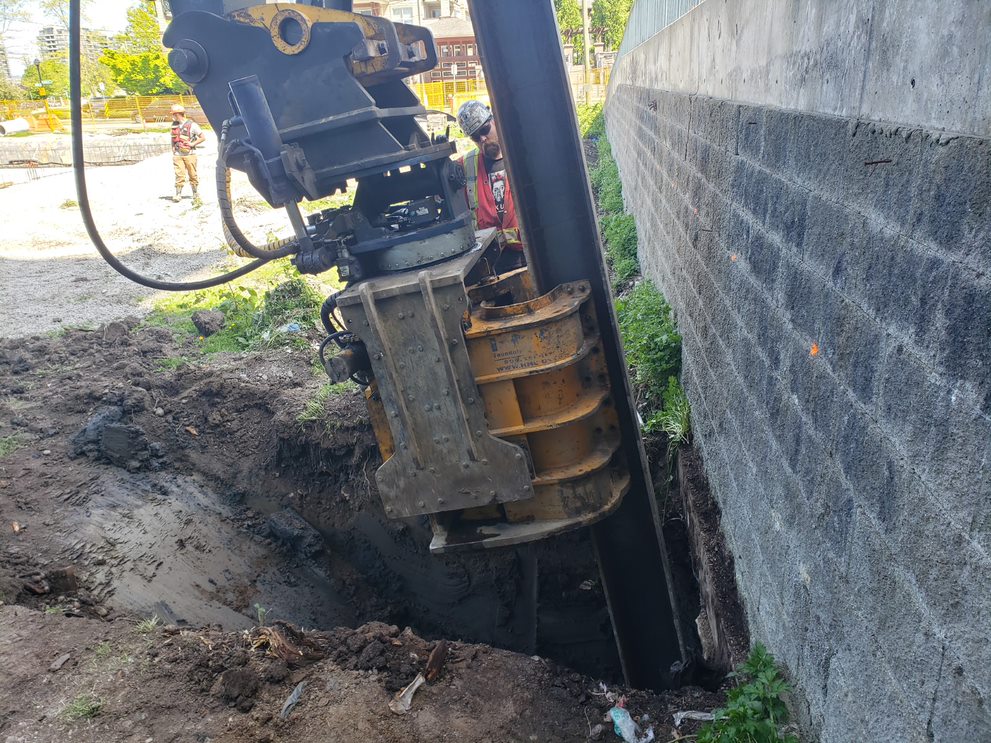Underpinning services is the process of strengthening and supporting the foundation of an existing building, house or other similar structure. The whole process is accomplished by strengthening the soil, introducing an expanding filler, reinforcing the existing foundation or if needed extending the foundation so the load is distributed over a larger or greater surface area.
When is underpinning needed?
For most property owners, underpinning is required when the actual foundation is not strong enough to support the building or house. This is usually because:
- The soil supporting the foundation has changed in some way; for instance, large trees nearby, damaged plumbing left unrepaired, and expansion or contraction due to moisture.
- The properties of the soil have not been understood during the design of the foundation, meaning the foundation is not appropriate for the conditions; hence it is not competent enough to withstand the weight of the structure.
- Structure of the house or building is used differently than before; for example, a house or building went through a major renovation
- New buildings are constructing nearby, resulting in the changing of soil that supports existing foundations
- To increase the capability of the existing foundation, e.g., to support another floor of the building
- Natural disasters such as droughts, floods or earthquakes have caused the structure to become unstable or unable to move.
- Economical solution over new construction
Types of underpinning
There are three main types of underpinning among architects, construction workers and engineers. Our underpinning services includes:
- Mass concrete or mass pour underpinning: mass concrete underpinning method has been trailed for hundreds of years. It would not be wrong to say that it is the oldest and most frequent method used by construction workers. This involves digging holes underneath a weak foundation and pouring new concrete, mud or filler below the original foundation. This helps and extends the breadth and depth of the foundation and provides extra inherent support. This is the simplest and basic underpinning method.
- Beam and base underpinning: this is a newer form of underpinning where reinforced steel and the concrete beam is constructed below the building or in replacement of the existing footing. The beam that transfers the weight of the building is these metal and concrete bases, which have been placed in a strategic load-bearing location.
- Mini-piled underpinning: the type of underpinning allows the greatest flexibility regarding where access is restricted or limited and environmental pollution is significant.
- Pre-test underpinning: it is utilized for strip or pad foundation. It can be utilized for working with 5-10 stories. Here the soil is made compressed and compact. This method is done prior to the underpinning process.

Signs to consider underpinning
There are some indicative signs to look for when evaluating your property. Our underpinning Bristol service will take of everything, so you don’t have to worry about anything.
Cracks in floor or walls: cracks are not always scary. Sometimes they are minor or hairline cracks in the plaster, skirting board and cornices. Bigger cracks are another story, and it’s a bigger underlying problem. It means that weight is not equally disturbed due to a weak foundation. Cracks could be exterior (render and brickwork) or interior (floor, wall and plaster tiles).
The floor is not levelled: a lean to one or more sides of your home is a strong sign that there are significant foundation issues. In serious cases, you could see the house fall from one side. But to see how significant it is, this will usually require a professional.
Doors and windows are out of alignment: doors and windows are a good indicator of foundation problems. Gaps could appear and get wider around your windows and doors. In more advanced cases, windows and doors may pull away from their surrounding walls.
Our underpinning process
- Before our underpinning Bristol engineers identify the required type and size of underpinning a foundation, they will first examine your existing foundation to understand the extent of damage and identify the causes of the damage.
- When you want underpinning services, we will assist you with three basic underpinning methods. These include mini-piled underpinning, mass pour/ concrete, and beam and base underpinning. The choice out if these three methods will depend on several factors, including the size of the infrastructure, ground conditions and budgetary considerations.
- After the site, excavation will be carried out. The volume of that will be based on the calculations of our engineers, and they will make sure the integrity of infrastructure is not compromised.

